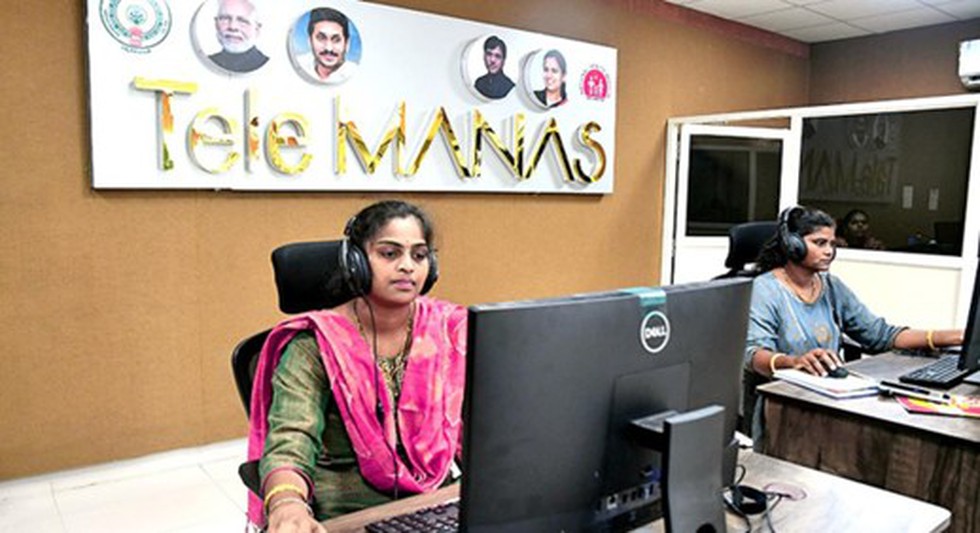
About National Tele Mental Health Programme:
- Tele Mental Health Assistance and Networking Across States (Tele MANAS) has been launched during October 2022.
- Aims: It aims to provide free tele-mental health services all over the country round the clock, particularly catering to people in remote or under-served areas.
- There are 42 active Tele Manas cells across 31 states and Union Territories.
- The service is accessible through the toll-free numbers with options to choose preferred languages (20 languages included till now).
- Tele-MANAS will be organised in two tier system:
- Tier 1: It comprises of state Tele-MANAS cells which include trained counsellors and mental health specialists.
- Tier 2: It will comprise of specialists at District Mental Health Programme (DMHP)/Medical College resources for physical consultation and/or e-Sanjeevani for audio visual consultation.
- Services offered by Tele MANAS:
- Tele counselling by trained counsellors.
- Tele Consultation by Mental Health professionals when required.
- Referral Services to other Mental Health Establishments such as Medical Colleges, District Mental Health Program (DMHP) services and speciality institutes.
About National Mental Health Programme (NMHP):
- The Government of India has launched the National Mental Health Programme (NMHP) in 1982, with the following objectives:
- To ensure the availability and accessibility of minimum mental healthcare for all in the foreseeable future, particularly to the most vulnerable and underprivileged sections of the population;
- To encourage the application of mental health knowledge in general healthcare and in social development;
- To promote community participation in the mental health service development and to stimulate efforts towards self-help in the community.
- The District Mental Health Program (DMHP) was launched under NMHP in the year 1996. The DMHP was based on ‘Bellary Model’ with the following components:
- Early detection & treatment.
- Training: imparting short-term training to general physicians for diagnosis and treatment of common mental illnesses with limited number of drugs under guidance of specialist. The Health workers are being trained in identifying mentally ill persons.
- IEC: Public awareness generation.
- Monitoring: the purpose is for simple Record Keeping.
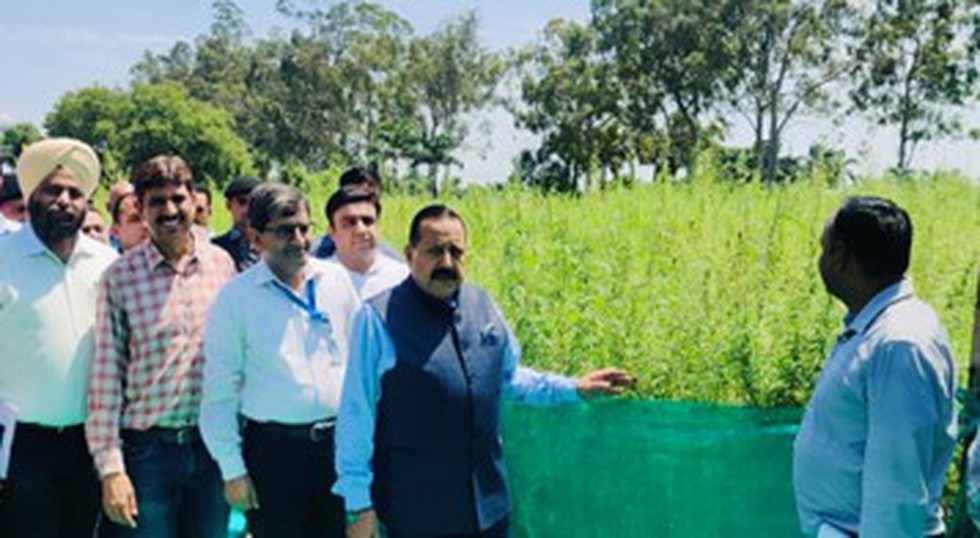
About Cannabis Medicine Project:
- ‘Cannabis Research Project’ of CSIR-IIIM Jammu is a first of its kind in India initiated under the leadership of Science & Technology Ministry in Private Public Partnership with a Canadian firm, which has a great potential to put substance of abuse for the good of mankind especially for patients suffering from neuropathies, cancer and epilepsy, malignancies.
- This project of CSIR-IIIM is also important from the perspective of Atma- Nirbhar Bharat as it will be able to produce export quality drugs meant for different kinds of neuropathies, diabetic pains etc.
- This project will explore the therapeutic properties of Cannabis, a plant which is otherwise prohibited and known for abuse.
Cannabis Cultivation:
- Cannabis, weed, pot, and marijuana all refer to the same group of plants known for their relaxing and calming effects.
- Cannabis contains at least 120 trusted Source active ingredients, or cannabinoids. The most abundant ones are cannabidiol (CBD) and delta-9-tetrahydrocannabinol (THC).
- Cannabidiol (CBD) - This is a psychoactive cannabinoid, yet it’s non-intoxicating and non-euphoric.
- THC- This is the main psychoactive compound in cannabis.
- Legal provisions in India:
- The central law that deals with cannabis is the Narcotic Drugs and Psychotropic Substances Act, 1985.
- The NDPS Act prohibits the sale and production of cannabis resin and flowers, but the use of leaves and seeds of the cannabis plant is permitted.
- However, different states have their own laws relating to the consumption, possession, sale or purchase of it.
- States like Uttarakhand, Uttar Pradesh, Manipur, Madhya Pradesh and Himachal Pradesh have started making the policy and rules for the use of Cannabis for scientific purposes.
About CSIR-Indian Institute of Integrative Medicine(CSIR-IIIM):
- It is the oldest scientific research institute in India with a history of discovering mint way back in 1960s, the centre of purple revolution and now the Cannabis Research Project.
- It was first established as a research and production centre in 1941 but later taken over by the Council of Scientific & Industrial Research (CSIR) in 1957.
- Mandate: To discover new drugs and therapeutic approaches from Natural Products, both of plant and microbial origin, enabled by biotechnology, to develop technologies, drugs and products of high value for the national and international markets.
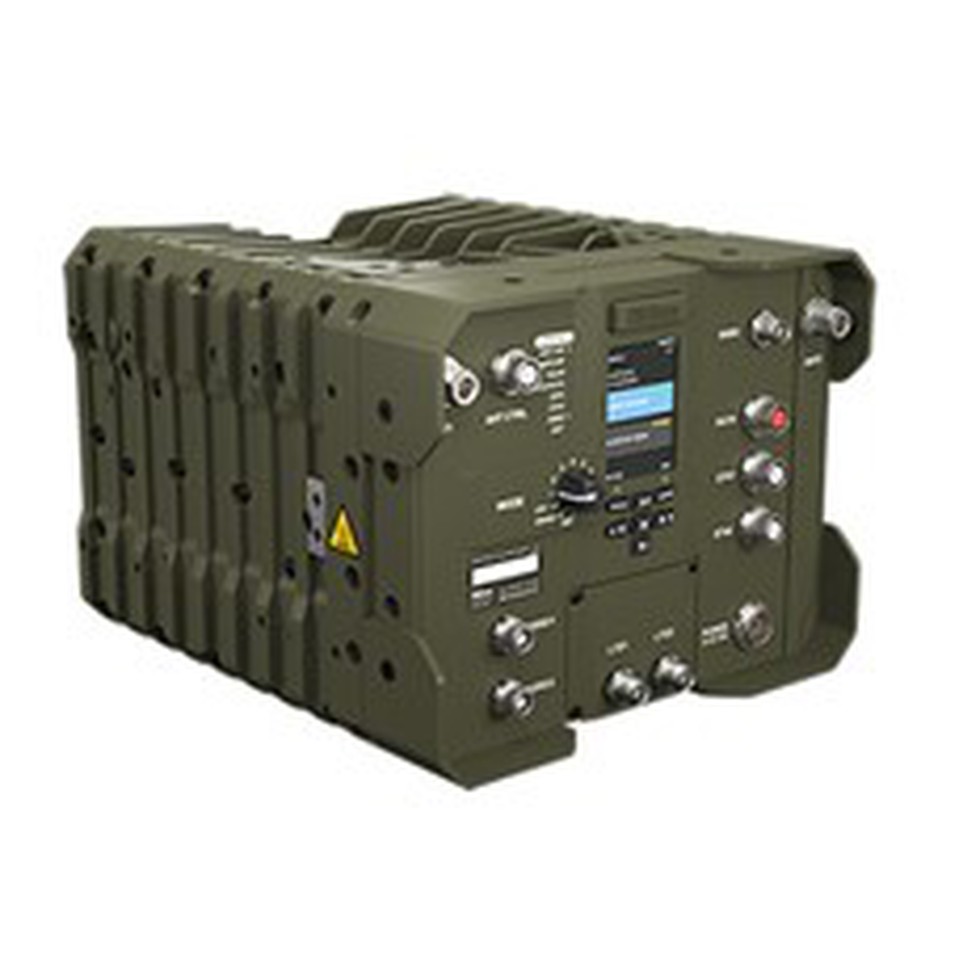
What is a Software Defined Radio (SDR)?
- SDR is a radio communication system that employs reconfigurable software-based components for the processing and conversion of digital signals.
- Unlike traditional radio communication systems, these radio devices are highly flexible and versatile.
- This is an emerging technology used to connect ever-increasing wireless world.
About Software-Defined Radio Tactical (SDR-Tac):
- Equipped with several multimedia capabilities, the indigenous SDR-Tac provides real-time voice, data and video information.
- It is built indigenously by the Navy’s Weapons and Electronics Systems Engineering Establishment (WESEE).
- What does SDR-Tac do?
- SDR-Tac is a four-channel multi-mode, multi-band, 19-inch rack-mountable, ship-borne software-defined radio system.
- It is intended to serve ship-to-ship, ship-to-shore, and ship-to-air voice-data communication for network-centric operations.
- It supports the simultaneous operation of all four channels covering V/UHF- and L-Band.
- This SDR system houses multiple types of waveforms for narrow-band and wide-band applications.
- Each ship will act as a relay wherein the data can jump from one ship to another.
- To transfer voice, data or video, the link device picks up the best-suited available network. It ensures that data reaches its destination.
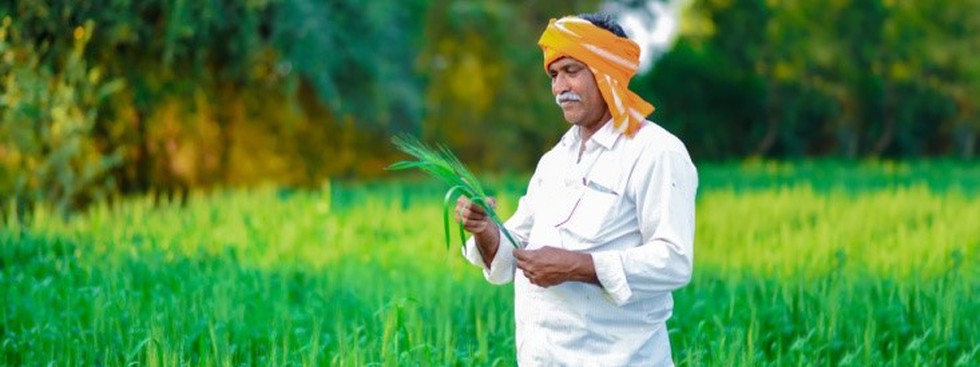
About Pradhan Mantri Fasal Bima Yojana:
- It was launched in 2016 and replaced all the prevailing yield insurance schemes in India.
- This scheme is being administered by the Department of Agriculture, Cooperation and Farmers’ Welfare under the Ministry of Agriculture, along with empanelled general insurance companies.
- Aim: To support production in agriculture by providing affordable crop insurance to ensure comprehensive risk cover for crops of farmers against all non-preventable natural risks.
- The scheme provides coverage for the entire cropping cycle, from pre-sowing to post-harvest and midseason adversities.
- Objectives:
- Providing financial support to farmers suffering crop loss/damage arising out of unforeseen events;
- Stabilizing the income of farmers to ensure their continuance in farming;
- Encouraging farmers to adopt innovative and modern agricultural practices;
- Ensuring flow of credit to the agriculture sector, which will contribute to food security, crop diversification and enhancing growth and competitiveness of the agriculture sector besides protecting farmers from production risks;
- Eligibility criteria:
- The scheme is compulsory for loanee farmers availing Crop Loan /KCC account for notified crops.
- The Scheme would be optional for non-loanee farmers.
- Insurance Coverage:
- Under this scheme, the insurance cover is limited to specific crops and agricultural risks related to crop yield.
- The list of notified crops includes food crops (i.e., cereals, millets, and pulses), oilseeds, annual commercial crops, and annual horticultural crops.
- General Exclusions: Losses arising out of war and nuclear risks, malicious damage and other preventable risks shall be excluded.
- Premiums:
- There will be a uniform premium of only 2% to be paid by farmers for all Kharif crops and 1.5% for all Rabi crops.
- In the case of annual commercial and horticultural crops, the premium to be paid by farmers will be only 5%.
- 95-98.5% actuarial premium is fulfilled by the state and central governments and shared on a 1:1 ratio.
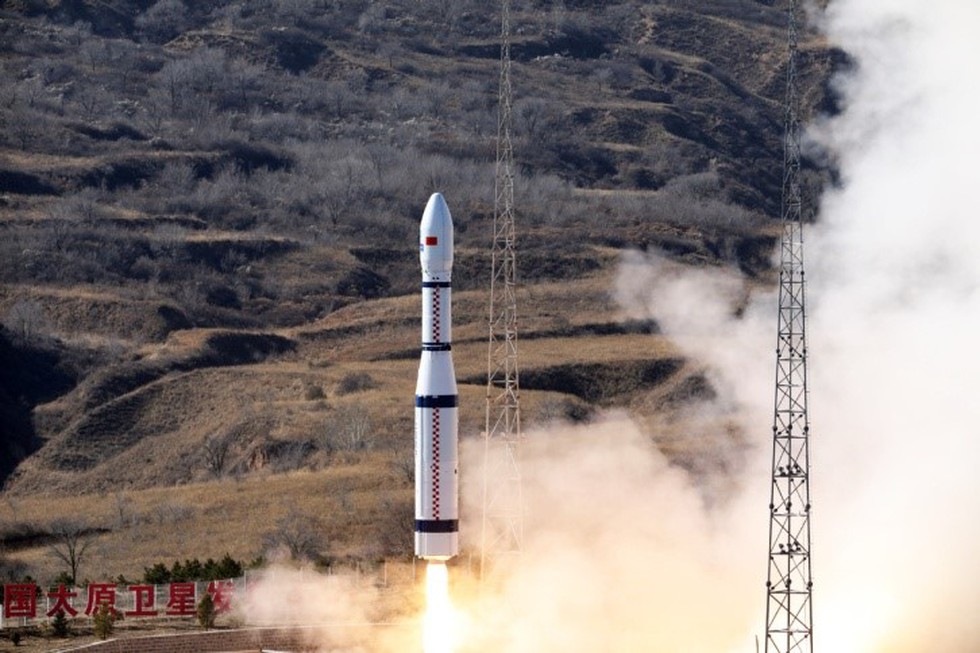
About Long March 10 Rocket:
- It is China’s new carrier rocket designed for manned moon landing missions.
- The rocket will be capable of ferrying a crew module along with a lunar lander to Earth-Moon transfer orbit.
- Features:
- It has a modular design, consisting of a service capsule, a return capsule and an escape tower, making it like a miniature space station on its own.
- The command module and living quarters form one half, while the energy and the power modules form the other half.
- The flexible approach allows for components to be reused.
- The crew capsule has been designed for operations in orbit around the Moon, as well as the Earth. The crew module has a capacity of between four and seven humans.
- The vehicle will use liquid hydrogen, liquid oxygen and kerosene as propellants.
- It will have a length of 92 meters, and will be able to deliver a minimum of 27 tonnes to the Earth-Moon transfer orbit.
- There is also a configuration of the vehicle without a booster that can ferry Taikonauts (Chinese word for astronaut) to the Tiangong space station.
Key facts about Tiangong space station:
- Tiangong (Chinese for "Heavenly Palace") is a modular space station being constructed by the China National Space Administration (CNSA).
- It is the first space station built by China.
- Tiangong is currently in low Earth orbit (LEO), and it is expected to be operational until 2028.
- It is a three-module space station. The core module Tianhe launched in April 2021, followed by the Wentian and Mengtian experiment modules in 2022.
- The station is about the size of the International Space Station (ISS), and it can accommodate up to three astronauts.
- China is only the third country to have put both astronauts into space and to build a space station, after the Soviet Union (now Russia) and the US.
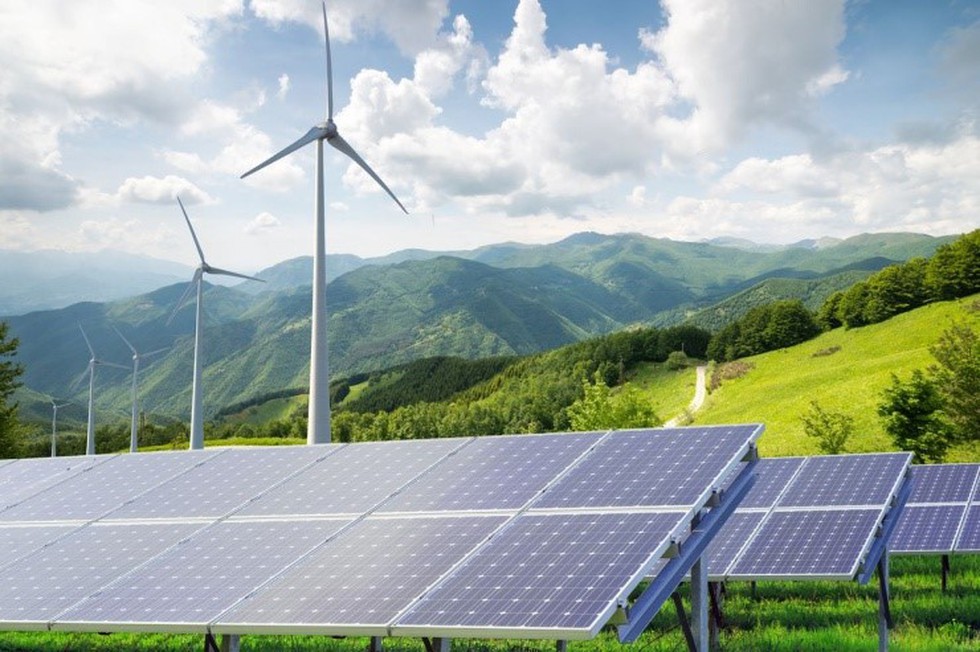
About India Climate Energy Dashboard (ICED) 3.0:
- It is the country’s one-stop platform for near real-time data on the energy sector, climate, and related economic datasets based on government published sources.
- It was developed by NITI Aayog in collaboration with the energy and climate think-tank Vasudha Foundation.
- Features:
- Developed as a user-friendly platform, ICED 3.0 enables users to freely access and analyses datasets using an analytical engine.
- It will facilitate insights and enhance understanding about the energy and climate sectors while identifying the key challenges.
- The Portal will draw insights from the available data parameters and hence immensely useful in monitoring the progress of India's clean energy transition journey.
- This dashboard offers more than 500 parameters, over 2000 infographics, and a number of interactive visualizations, allowing users to gain a holistic understanding of India's energy sector.
- Besides energy and climate, the dashboard also offers information on economy and demography for comparative study and its combined analysis along with the energy and climate issues.
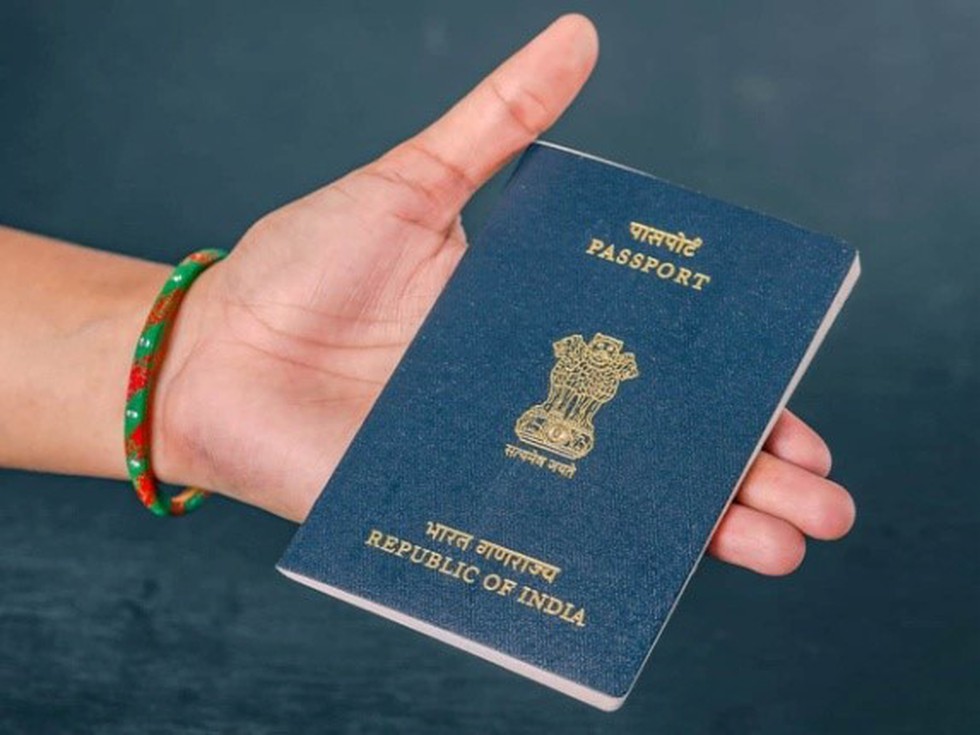
About Modes of losing Indian Citizenship:
- The Citizenship Act 1955 lays down the three modes by which an Indian citizen, whether a citizen at the commencement of the Constitution or subsequent to it, may lose their citizenship. These are,
- By Renunciation:
- An Indian Citizen of full age and capacity can renounce his Indian citizenship by making a declaration to that effect and having it registered.
- But if such a declaration is made during any war in which India is engaged, the registration shall be withheld until the Central Government otherwise directs.
- When a male person renounces his citizenship, every minor child of him ceases to be an Indian citizen.
- Such a child may, however, resume Indian citizenship if he makes a declaration to that effect within a year of his attaining full age, i.e., 18 years.
- By Termination:
- If a citizen of India voluntarily acquires citizenship of another country, then the citizenship of India gets terminated.
- This provision does not apply during times of war.
- If any question arises as to whether, when, or how any person has acquired the citizenship of another country, it is to be determined by such authority and in such manner as may be prescribed by the rules.
- By Deprivation:
- It is a compulsory termination of citizenship of India.
- A citizen of India by naturalization, registration, domicile and residence may be deprived of his citizenship by order of the Central Government if it is satisfied that:
- The citizen has obtained the citizenship by means of fraud, false representation, or concealment of any material fact;
- The citizen has shown disloyalty to the Constitution of India;
- The citizen has unlawfully traded or communicated with the enemy during a war;
- The citizen has, within five years after registration or neutralization, been imprisoned in any country for two years;
- The citizen has been ordinarily resident out of India for seven years;
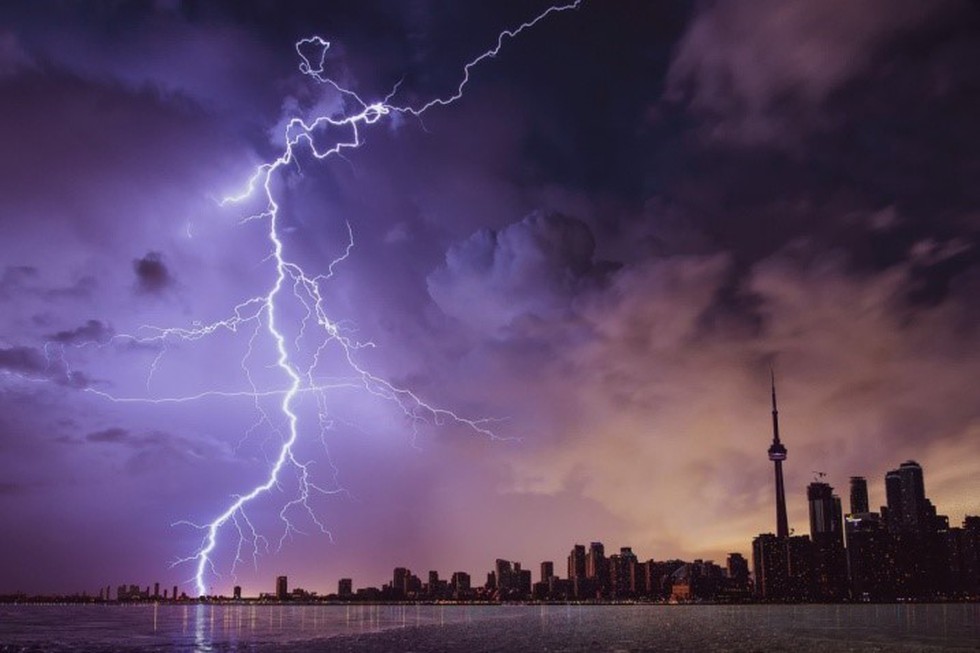
About Hygroelectricity:
- Hygroelectricity is the generation of electricity from the humidity of the air.
- It is a type of renewable energy that has the potential to be a major source of power in the future.
- How it works?
- The key to harvesting electricity from humid air lies in a tiny device comprising two electrodes and a thin layer of material filled with nanopores.
- These nanopores, each less than 100 nanometres in diameter, allow water molecules from the air to pass through the device.
- As these molecules move from an upper chamber to a lower chamber, they interact with the edges of the nanopores, leading to a buildup of electric charge imbalances between the chambers.
- This process effectively transforms the device into a miniature battery, generating continuous electricity.
- Just as clouds create electrical charges and give rise to lightning bolts during storms, this revolutionary device converts air humidity into usable electricity.
- Advantage of Hygroelectricity: Unlike other renewable energy sources such as solar and wind, air humidity is continuously available, making it a sustainable reservoir of energy.
- Challenges:
- Currently, the fingernail-sized device can only produce electricity equivalent to a fraction of a volt.
- Scaling up the technology to meet practical energy demands is a significant hurdle.
What is an electrode?
- An electrode is a solid conductor that conducts electricity to and from an electrolyte, which is an electrically conductive solution or molten salt.
- Electrodes are used in many different applications, including batteries, electrochemical cells, and electroplating.
- There are two main types of electrodes: anode and cathode.
- The anode is the electrode where oxidation occurs, and the cathode is the electrode where reduction occurs. Oxidation is the loss of electrons, and reduction is the gain of electrons.
- In a battery, the anode is the negative terminal, and the cathode is the positive terminal.
- When the battery is connected to a circuit, electrons flow from the anode to the cathode. This flow of electrons creates an electric current.
What are nanopores?
- Nanopores are tiny holes that are typically on the order of a few nanometres in diameter.
- They can be found in a variety of materials, including biological cells, synthetic membranes, and even graphene.
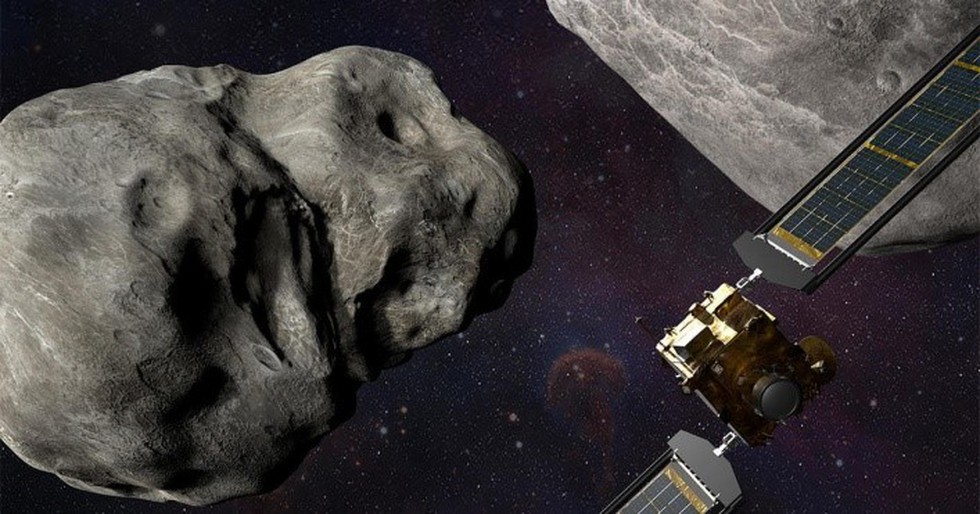
About DART Mission:
- NASA's DART mission was a spacecraft designed to test a method of deflecting an asteroid for planetary defense, using the "kinetic impactor" technique (in simplest terms means smashing a thing into another thing).
- DART was the first-ever space mission to demonstrate asteroid deflection by kinetic impactor.
- The target of the spacecraft was a 160-meter-wide asteroid known as Dimorphos, which is a moonlet in orbit around the larger asteroid, Didymos.
- It was launched in November 2021.
- DART spacecraft successfully collided with Dimorphos on 26 September 2022, altering the asteroid's orbit by 33 minutes.
- It is the first-time humanity intentionally changed the motion of a celestial object in space.
What are Boulders?
- It is a geological term for a rock fragment that is larger than 25.6 centimetres (10.1 inches) in diameter.
- Boulders can be made up of various types of rocks, including igneous, sedimentary, and metamorphic rocks.
- The composition of a boulder depends on the geology of the area in which it formed.
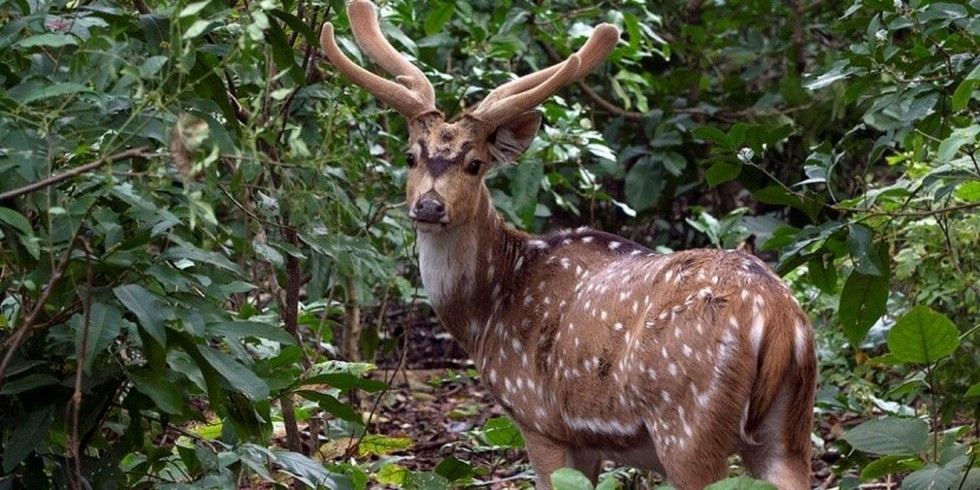
About Kalagarh Tiger Reserve (KTR):
- Location: It is located in the Nainital district of Uttarakhand.
- When Jim Corbett Park was established in 1974, the northern region of the park was renamed Kalagarh Tiger Reserve.
- It is named after the Kalagarh dam, which was constructed on the Ramganga River.
- KTR is spread over an area of 301.18 sq. km. which also includes Sonanadi Wildlife Sanctuary, along with Jim Corbett Park.
- Terrain: The reserve is located in the foothills of the Himalayas, and the terrain is varied, with forests, grasslands, and hills.
- Flora: It is home to several species of trees, such as sal, sheesham, semal, bakli, haladu, tun, sain, fig, bamboo, etc along with medicinal plants.
- Fauna:
- It has a high density of tigers, leopards, elephants and others from the cat’s family.
- It carries a lustrous breed of deer -chital, barking deer, goral, sambar, and hog deer.
- The park has more than 580 species of birds, which include kingfishers, wagtails, forktails, pheasants, hornbills etc.
Key facts about Ramganga River:
- It is a tributary of the Ganges River in India.
- Origin: It originates in the Garhwal Himalayas in Uttarakhand state.
- Length: The total length of the river from the source to its outfall into the Ganga is 596 km, and the entire length lies in Uttarakhand and Uttar Pradesh.
- It joins the Ganga on its left bank near Kannauj in the Fatehgarh district, Uttar Pradesh.
- Tributaries:
- It is fed by several major tributaries, including the Kosi River, which joins it near Kalagarh, forming the Ramganga Reservoir.
- Other significant tributaries include the Khoh, the Gangan, the Aril, and the Deoha (Gorra) rivers.





























































































































































.png)
.png)
.png)
.png)
.png)


.png)
.png)
.png)





.png)
.png)






.png)
.png)
.png)
.png)
.png)
.png)
.png)
.png)
.png)

.png)







.png)
.png)


.png)
.png)
.png)


.png)

.png)
.png)





.jpg)

.png)
.png)


.png)

.png)
.png)
.png)

.jpg)

.jpg)


.png)

.png)
.png)
.png)
.png)
.png)
.png)
.png)
.png)
.png)
.png)

.png)

.png)





.png)
.png)
.png)
.png)
.png)
.png)
.png)
.png)
.png)
.png)
.jpg)
.jpg)

.png)
.png)
.png)
.png)
.png)
.png)
.png)
.png)
.png)
.png)
.png)
.png)
.png)
.png)
.png)
.png)
.png)
.png)
.png)
.png)
.png)
.png)



.png)
.png)

.jpg)
.jpg)


.jpg)
.jpg)
.jpg)
.jpg)
.jpg)

.jpg)








.jpg)
.jpg)
.jpg)
.jpg)
.jpg)

















.jpg)
.jpg)







.jpg)


















.jpg)
.jpg)






























































































.jpg)
.jpg)


























.jpg)

.jpg)










.jpg)








.jpg)




.jpg)










.jpg)


















.jpg)












































.jpg)














.jpg)
.jpg)
.jpg)





.jpg)

.jpg)
.jpg)





































































.jpg)


































.jpg)
.jpg)
















































.jpg)












.jpg)


.jpg)




.jpg)
.jpg)
.jpg)

.jpg)
.jpg)
.jpg)
.jpg)

.jpg)
.jpg)
.jpg)

.jpg)
.jpg)
.jpg)
.jpg)
.jpg)
.jpg)
.jpg)
.jpg)

.jpg)


.jpg)
.jpg)
.jpg)
.jpg)
.jpg)
.jpg)
.jpg)
.jpg)
.jpg)
.jpg)











.jpg)
.jpg)





.jpg)
.jpg)
.jpg)
























.jpg)
























.jpg)









.jpg)
.jpg)







.jpg)
.jpg)









































.jpg)
.jpg)
.jpg)
.jpg)
.jpg)

.jpg)
.jpg)
.jpg)
.jpg)
.jpg)


.jpg)
.jpg)
.jpg)
.jpg)
.jpg)

.jpg)
.jpg)
.jpg)
.jpg)
.jpg)
.jpg)
.jpg)
.jpg)
.jpg)
.jpg)
.png)

.png)
.png)

.png)
.png)
.png)
.png)


.jpg)
.jpg)

.jpg)
.jpg)
.jpg)

.png)
.png)
.png)
.png)
.png)
.png)
.png)

.png)
.png)
.png)
.png)
.png)
.png)
.png)
.png)
.png)
.png)





































































-min.png)



.png)




.png)








































